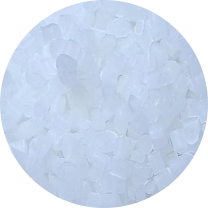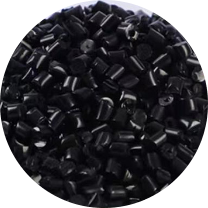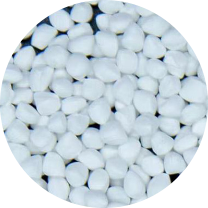How to adjust the machining process to maximize the functionality of FPM Functional Property Masterbatch?
What impact do different plastic processing techniques (such as injection molding, extrusion, blow molding, etc.) have on the performance of FPM? How to adjust the machining process to maximize the functionality of FPM Functional Property Masterbatch?
Different plastic processing techniques have a significant impact on the performance of FPM (Functional Property Masterbatch). The following is a brief overview of common plastic processing processes such as injection molding, extrusion, and blow molding and their impact on FPM performance, and how these processes can be adjusted to maximize FPM functionality:
Injection molding process
Influence:
The injection molding process is often used to produce plastic products with complex shapes and structures. During the injection molding process, FPM's functional particles may be affected by high temperatures and pressures, causing changes in their properties.
Parameters such as injection speed, mold temperature, holding time and melt temperature may affect the dispersion and performance of functional particles in FPM.
Adjustment method:
Optimize injection speed and melt temperature to ensure even dispersion of functional microparticles in the plastic melt.
Adjust the mold temperature and holding time to reduce the shrinkage and deformation of functional particles during the cooling process.
Extrusion process
Influence:
The extrusion process is typically used to produce continuous plastic profiles, films or pipes, etc. During the extrusion process, the functional particles of FPM may be affected by shear force and temperature, thus affecting their performance.
Parameters such as the extruder's screw speed, extrusion temperature, pulling speed and cooling method may affect the dispersion and performance of functional particles in FPM.
Adjustment method:
Adjust the screw speed and extrusion temperature of the extruder to ensure that the functional particles are evenly dispersed and stable in the plastic melt.
Optimize the traction speed and cooling method to reduce the deformation and loss of functional particles during the extrusion process.
Blow molding process
Influence:
The blow molding process is mainly used to produce hollow plastic products, such as bottles, containers, etc. During the blow molding process, the functional particles of FPM may be affected by stretching and air blowing, resulting in changes in their properties.
Parameters such as blowing pressure, blowing time, mold temperature and plastic melt fluidity during the blow molding process may affect the dispersion and performance of functional particles in FPM.
Adjustment method:
Adjust the blowing pressure and blowing time to ensure that the functional particles are evenly dispersed during the blow molding process and maintain their functionality.
Control the mold temperature and the fluidity of the plastic melt to reduce the breakage and deformation of functional particles during the stretching process.
In order to maximize the functionality of FPM, the corresponding process parameters need to be adjusted according to the specific plastic processing technology and FPM performance requirements. This may include optimizing parameters such as temperature, pressure, time, speed and cooling methods to ensure that the functional microparticles are evenly dispersed in the plastic melt and retain their functionality. At the same time, sufficient experiments and tests are needed to evaluate the performance of FPM under different process conditions to find the best process solution.

Organic Biodegradable Antibacterial PA/PLA/PP Masterbatch
Different plastic processing techniques have a significant impact on the performance of FPM (Functional Property Masterbatch). The following is a brief overview of common plastic processing processes such as injection molding, extrusion, and blow molding and their impact on FPM performance, and how these processes can be adjusted to maximize FPM functionality:
Injection molding process
Influence:
The injection molding process is often used to produce plastic products with complex shapes and structures. During the injection molding process, FPM's functional particles may be affected by high temperatures and pressures, causing changes in their properties.
Parameters such as injection speed, mold temperature, holding time and melt temperature may affect the dispersion and performance of functional particles in FPM.
Adjustment method:
Optimize injection speed and melt temperature to ensure even dispersion of functional microparticles in the plastic melt.
Adjust the mold temperature and holding time to reduce the shrinkage and deformation of functional particles during the cooling process.
Extrusion process
Influence:
The extrusion process is typically used to produce continuous plastic profiles, films or pipes, etc. During the extrusion process, the functional particles of FPM may be affected by shear force and temperature, thus affecting their performance.
Parameters such as the extruder's screw speed, extrusion temperature, pulling speed and cooling method may affect the dispersion and performance of functional particles in FPM.
Adjustment method:
Adjust the screw speed and extrusion temperature of the extruder to ensure that the functional particles are evenly dispersed and stable in the plastic melt.
Optimize the traction speed and cooling method to reduce the deformation and loss of functional particles during the extrusion process.
Blow molding process
Influence:
The blow molding process is mainly used to produce hollow plastic products, such as bottles, containers, etc. During the blow molding process, the functional particles of FPM may be affected by stretching and air blowing, resulting in changes in their properties.
Parameters such as blowing pressure, blowing time, mold temperature and plastic melt fluidity during the blow molding process may affect the dispersion and performance of functional particles in FPM.
Adjustment method:
Adjust the blowing pressure and blowing time to ensure that the functional particles are evenly dispersed during the blow molding process and maintain their functionality.
Control the mold temperature and the fluidity of the plastic melt to reduce the breakage and deformation of functional particles during the stretching process.
In order to maximize the functionality of FPM, the corresponding process parameters need to be adjusted according to the specific plastic processing technology and FPM performance requirements. This may include optimizing parameters such as temperature, pressure, time, speed and cooling methods to ensure that the functional microparticles are evenly dispersed in the plastic melt and retain their functionality. At the same time, sufficient experiments and tests are needed to evaluate the performance of FPM under different process conditions to find the best process solution.

Organic Biodegradable Antibacterial PA/PLA/PP Masterbatch


 English
English 中文简体
中文简体 한국어
한국어 عربى
عربى













